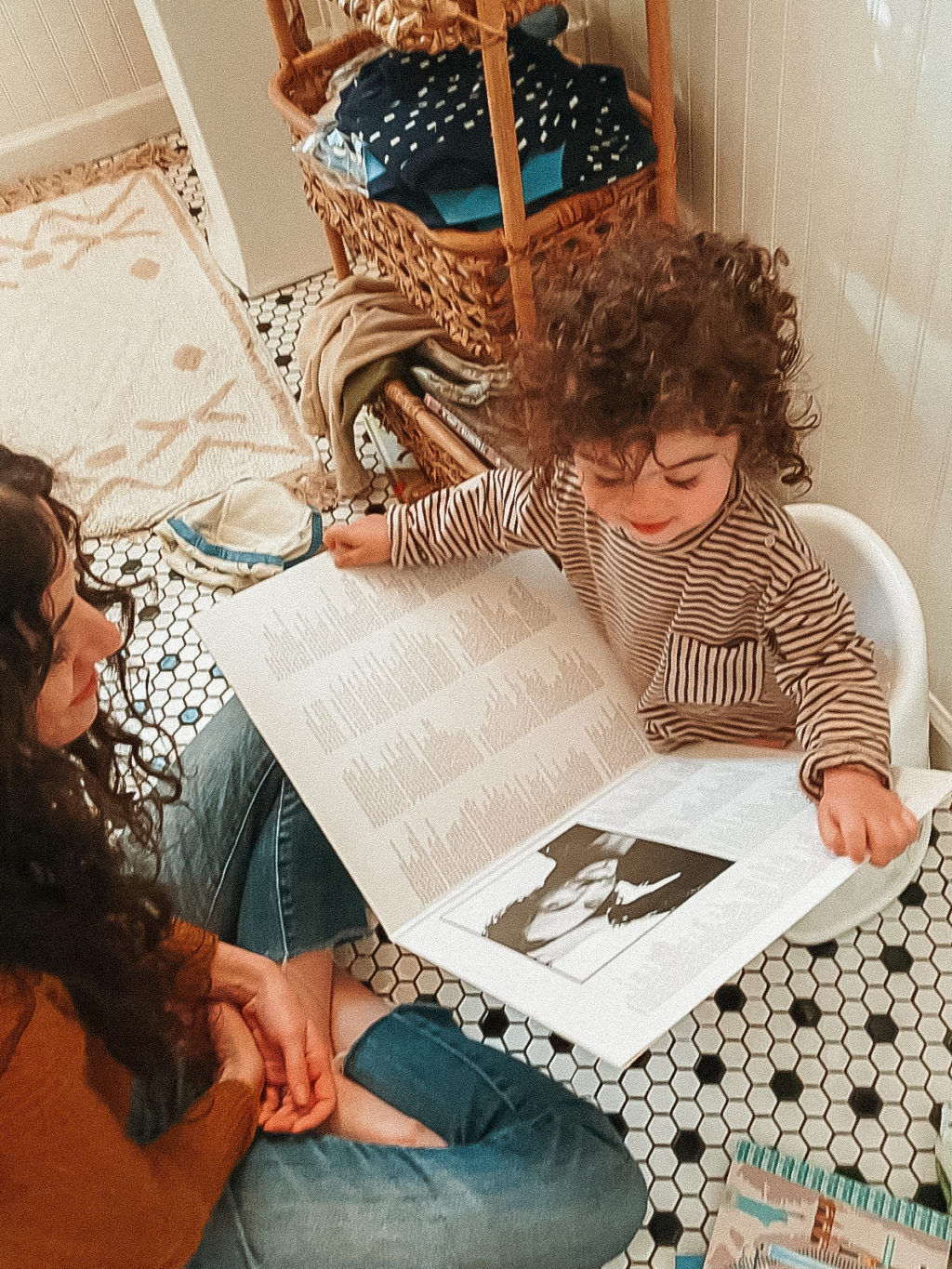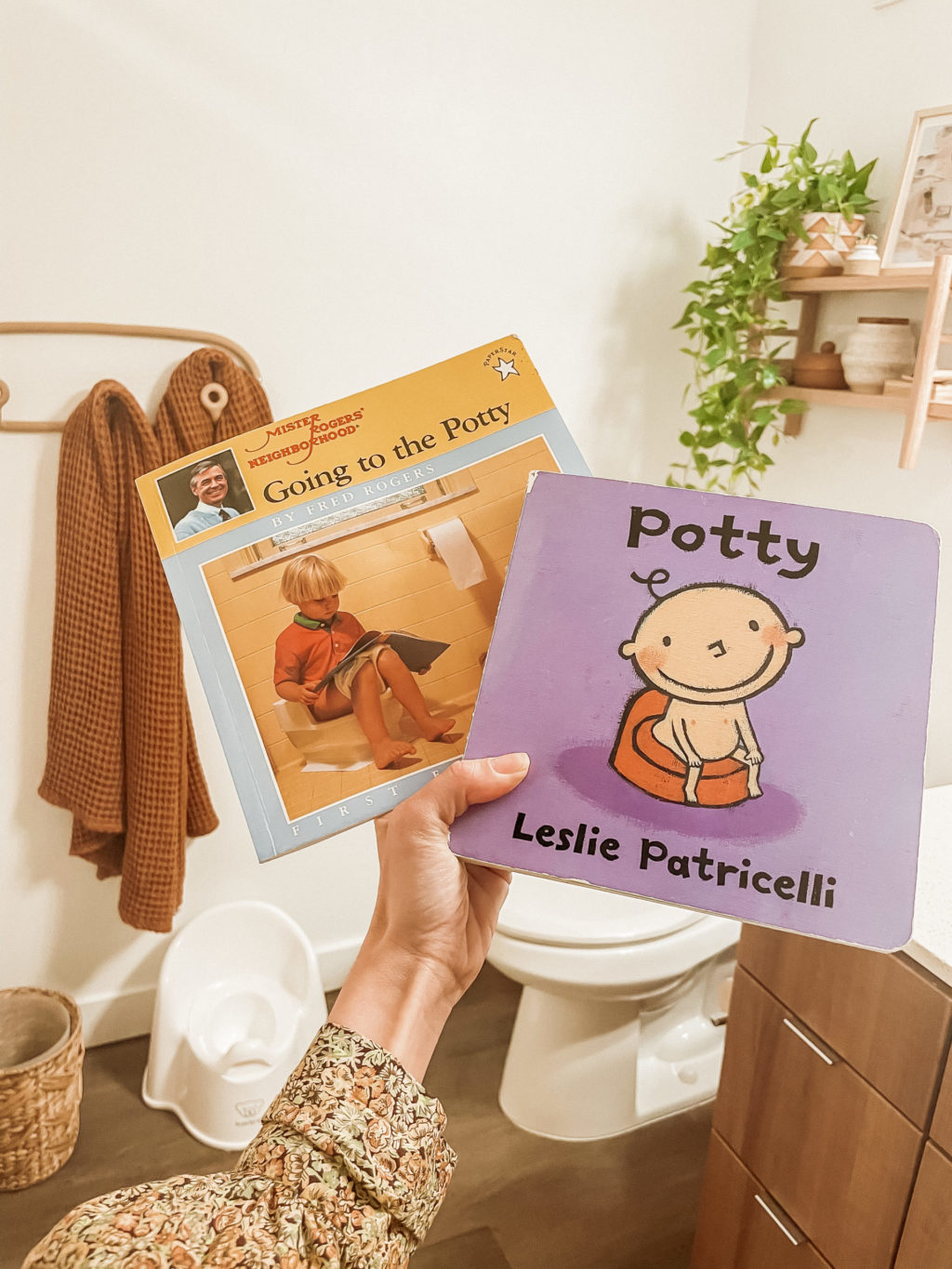
Potty training! How did you potty train your son? One of the biggest topics among my mom friends and one of the most asked questions from you all on Instagram. Every child is so different. Read that again…every child is very different, and the timing or approach that works for one kid, may not work for another, which is why I loved the toilet learning approach SO much and fully believe its why we had so much success with it all when our son was a little over 1 1/2 yrs old.
What is Toilet Learning?
So before I get started on anything, let’s chat about the toilet learning approach. It’s not potty training. You’re not training your kid to do anything. Children naturally want to be involved in everything we do, including learning how to use the toilet and be independent. This is a gradual process vs the idea of potty training in a weekend or other methods. I’ve realized with this process, its takes some time, but takes the pressure off your child and it becomes a pleasant one without bribes and gives them the opportunity to feel independent — which is what almost all children want.
When to begin Toilet Learning / What are signs my child is ready for Toilet Learning?
There are “sensitive periods” for many of our children’s milestones and developmental learning periods. For toilet learning that is between 12 and 18th months. We saw a few signs with our son that told us he was ready for toilet learning. Signs your child may be ready to ditch the diapers can look anything like the below…
- an interest in the actual toilet
- tries mimics you in the bathroom
- your child is walking
- you notice they touch their diaper often
- you notice a pattern in your child’s bowel movements each day
- interest in a routine/cycle (helping with laundry, unloading dishwasher, etc…) – these are all signs your child likes to follow along and can understand a routine.
What to expect when you begin Toilet Learning
Expect for things to get messy. Expect to be doing more laundry and wiping up accidents. Your child has been used to going in a diaper and used to that diaper absorbing everything. They’re not used to the sensation of feeling wet. For us that was a big motivator, our son did not like being wet. There were no sticker charts or prize baskets…just the simple idea that we try to stay dry. Communicating staying dry vs wet was a big factor during the process. In the beginning O would touch his underwear to double check he was dry and then tell us. If he had an accident, we would simply say “I know you’re working so hard to keep your underwear dry. These are wet. Let’s go to the bathroom.” Try to maintain a positive attitude.
Make frequent visits to the bathroom together. Give them time to sit and relax their bodies. In the beginning we would take O to the bathroom every half hour to see he had to go. If not, we didn’t push it and trusted he would give us a sign he had to go. Within days of being consistent, he was running to the bathroom on his own when he felt the urge to go.
Why Do I Love Toilet Learning vs Potty Training?
Toilet learning takes the pressure out of your child having to use the toilet. There’s no reward, no consequences, just naturally explaining what we do when we need go to the bathroom and giving them the tools to do so. In comes the Montessori approach to toilet learning, by giving them a prepared environment. If you’re familiar with the Montessori approach to basically anything, it’s making sure children have a prepared environment. When there is a prepared environment, we are setting our children up and giving them the tools they need to explore and succeed. What does a prepared environment in the bathroom look like?
Creating a Prepared Environment for Toilet Learning: What You’ll Need
- a small toilet – we have liked using the Baby Bjorn toilet (we bought one for each bathroom and now use one for the car)
- extra cotton underwear (We used these cotton training underwear in the beginning. They are a little thicker. These are great too.)
- a basket of books (We used Potty by Leslie Patricelli and Going to the Potty by Fred Rogers , along with a few other short books to pass the time.)
- a stool or place to sit and change wet clothes/put on new underwear
- wipes – we use water wipes for sensitive skin
- laundry basket – anytime O would wet his underwear, we would go together to the laundry basket after getting changed into dry underwear. This routine proved to be very helpful and another way to encourage independence.
Going Out While Toilet Learning
A lot of potty training methods involve locking yourself in your house for a weekend or more until your child doesn’t have an accident. This doesn’t have to be the only way. We would bring a toilet out with us in the early days of toilet learning. (It’s actually still in our car-just in case. This is a great portable potty option. This foldable toilet seat is an easy to clean, small size option to fit on top of toilets for little ones.) It helped if we didn’t think we could make it to a public restroom right away. We also would use the potty once we arrived to a place before getting out of the car and again before getting back in the carseat to go home. We also would keep a pair of extra pants and underwear in the car just in case of an accident.
I’ve read many people use diaper covers on top of regular underwear to avoid any carseat mess, but still giving your child the chance to feel wet if there’s an accident vs a diaper while out. I’ve also read about using pull-ups while out. I did this once or twice in the beginning and I personally feel it set O back when we would get home, because that wet sensation wasn’t there anymore and he would forget he had to stay dry. If you’ve done this or are doing this, don’t fret. We immediately stopped using anything but underwear during the day. Using strictly underwear while out and sticking to frequent asking/checking in if our little guy needed to use the restroom, was the way to go for us and allowed the toilet learning process to happen quite quickly. No matter what you choose, it’s great to have options for on the go…that’s just what worked for us.
A few extra tips for Toilet Learning
I hope this has been helpful and has given anyone who is looking to begin the toilet learning process some stress free information. Trust yourself to pick up on those “I need to go to the bathroom” cues from your little one and trust that they want to succeed and learn. They will get it when the time is right for them. A few extra tips that worked for us:
- Stick to just underwear at home in the beginning and then two-piece outfits that are easy for them to pull down for the bathroom on their own. (We exclusively use underwear, except when O is sleeping.)
- Have your child watch you pour the pee or poop in the big toilet – O loved this part and wanted to get involved. Now he does it on his own and flushes.
- If you’re really looking for a reward at the end – using the flusher when O went to the bathroom was very exciting for him. We made sure to only do this when he did pee or poop on the potty.
Check out some helpful tools below that set us up for success:
**Check out more baby + parenthood posts, HERE.




Thanks for sharing. What about at night?